EAST HAMPTON MAIN STREET HISTORIC DISTRICT
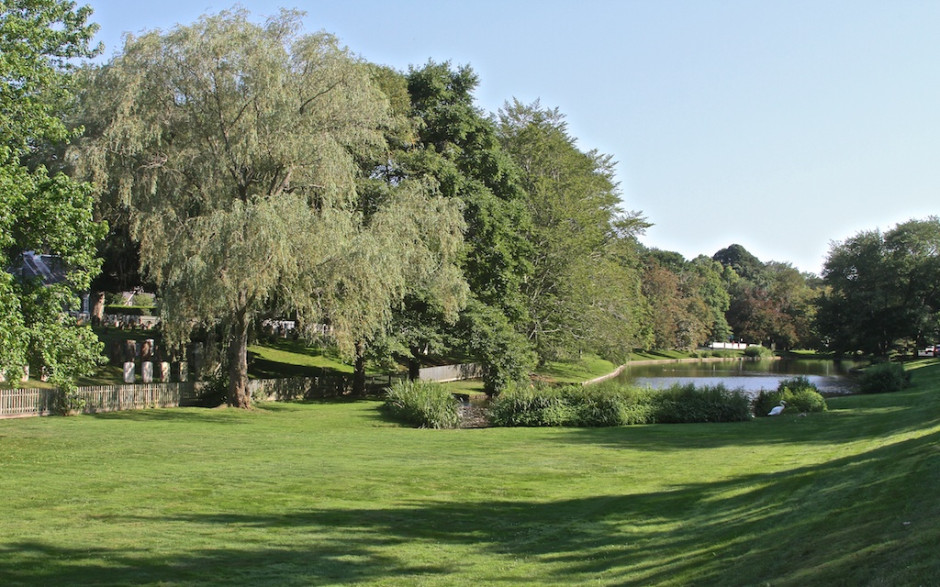
1648 VILLAGE GREEN, EAST HAMPTON
The buildings and landscapes within East Hampton’s Main Street Historic District recall important themes and periods in the history of the Village, from its founding in 1648 through two centuries as an agrarian community to its flowering as a summer resort. The Village Green recalls the very beginning of East Hampton. The settlers who arrived here from New England in 1648 laid out a broad common down the center of the fertile coastal plain beside Hook Pond. Their dwellings lined either side of the common, and on the common they built their meeting house. This compact settlement was typical of Puritan New England villages. The remnant of the 1648 common includes Town Pond, once a livestock watering hole, and the South End Burying Ground with gravestones from the 1600s.
****************************************
WALKING TOUR–WEST SIDE
North to South
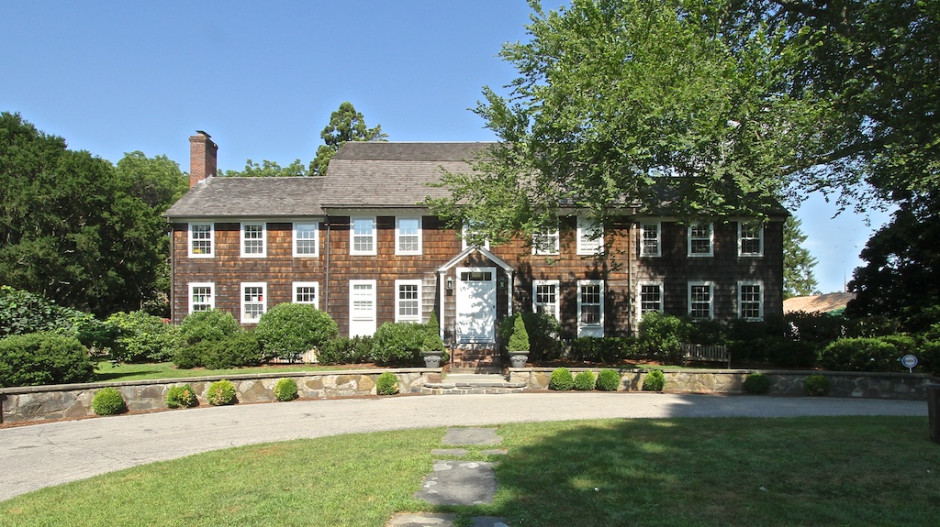
COL. ABRAHAM GARDINER HOUSE: This 1747 Georgian gambrel roof house was moved back from the street in 1924. It was occupied by British troops during the American revolution. Now headquarters of the Ladies’ Village Improvement Society, established in 1895.
Visit: Ladies’ Village Improvement Society

JONATHAN OSBORN HOUSE: Built as a single house (one room wide) about 1720, the Osborn house has expanded to the south, north and west. The south wing was added in the 1880s. The Osborn-Jackson House is now the headquarters of the East Hampton Historical Society.
Visit: East Hampton Historical Society

OSBORN-JACKSON HOUSE: The kitchen fireplace in the rear lean-to of the Osborn-Jackson House is six feet wide and four feet tall. This wide hearth was a versatile cooking area. The iron crane anchored to the fireplace jamb suspended pots and kettles over a log fire. Meat was roasted on a spit within the tin reflector oven, with its open back facing the fire. The footed skillet to the left cooked over a small bed of glowing coals. In the back wall of the fireplace is the door to the bake oven. After being heated by a fire, the coals and ashes were removed and the oven door closed to retain the heat.
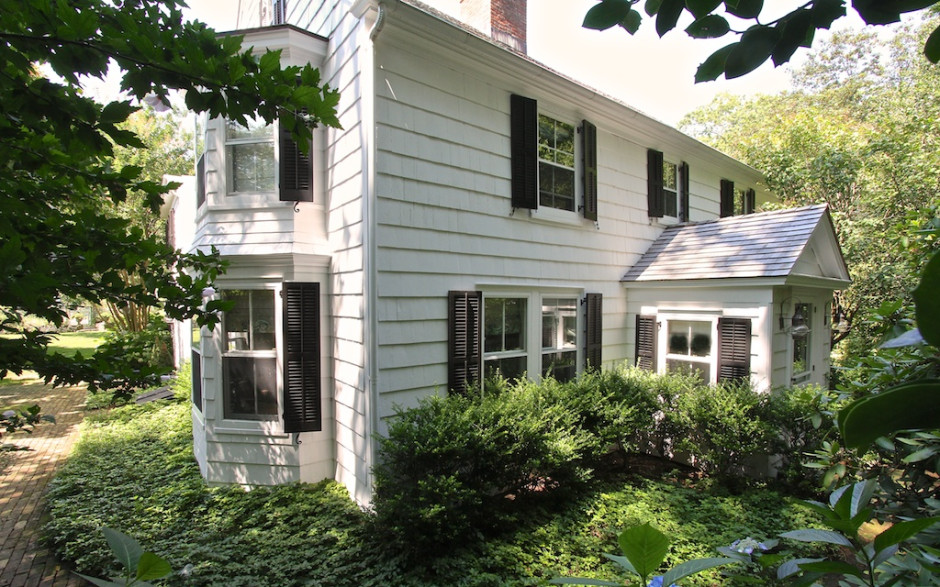
DANIEL OSBORN HOUSE: The Osborns had owned this lot since the 1660s. The present house, built about 1800, incorporates a chimney built for an earlier structure. Private residence.

JEREMIAH MILLER HOUSE: Built in 1799, the right wing was East Hampton’s first post office. This great Georgian house was moved back on its lot and remodeled in the colonial style in 1885. Private residence.
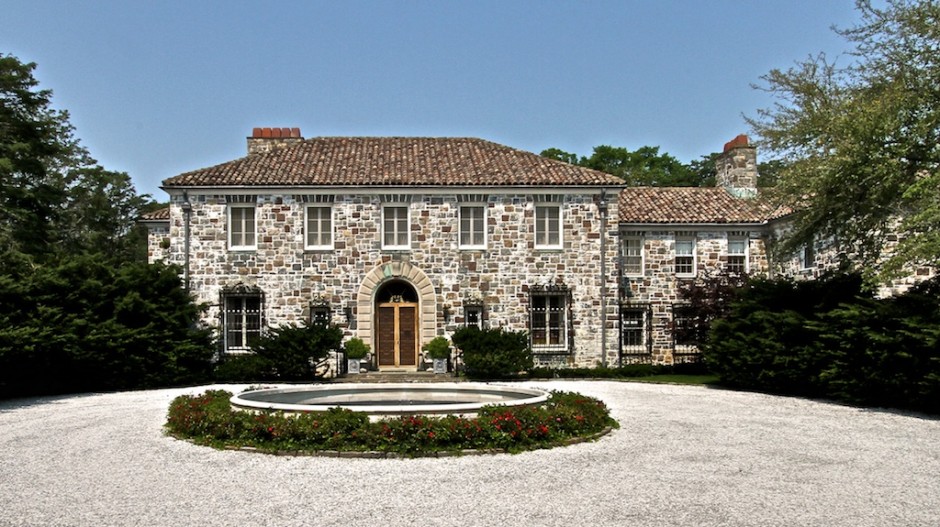
SARAH DIODATI GARDINER HOUSE: An atypical Main Street house, this stone building was built in 1939 in the Spanish Romanesque style. It replaced an 1840 Gardiner house. Private residence.

OSBORNE OFFICE: This 18th century house was moved from the street in 1898 and has been a law office ever since. It has a distinctive plaster cove cornice.
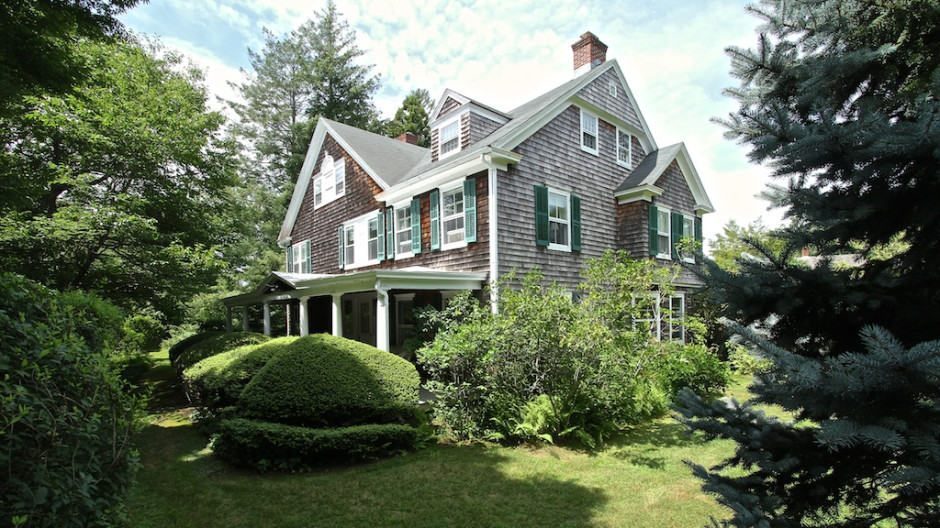
JOSEPH S. OSBORNE HOUSE: Constructed in 1898, it was designed by and built for Joseph Osborne. It has an interesting asymmetrical facade and many different sized windows. Private residence.
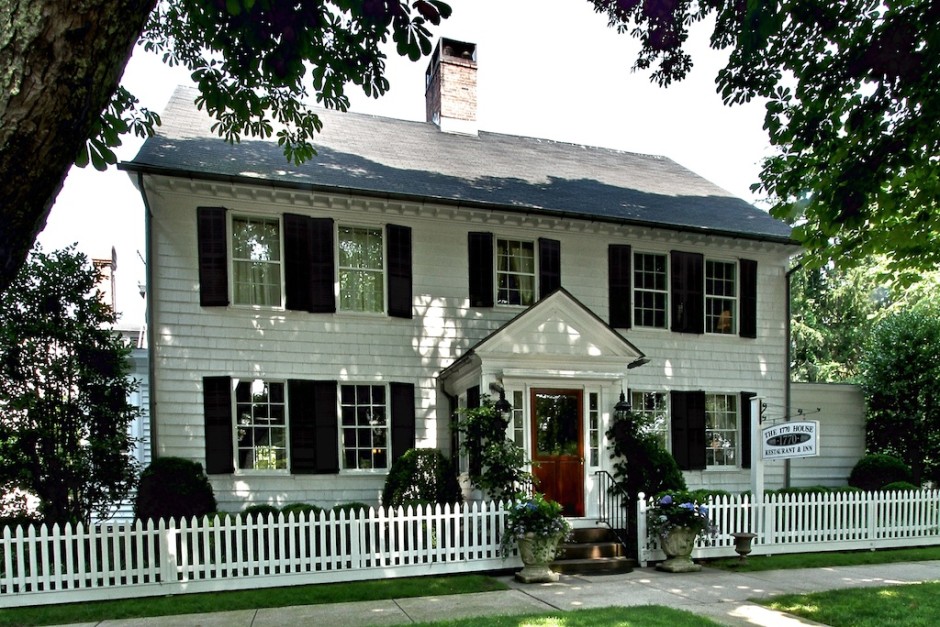
JONATHAN DAYTON HOUSE: An 18th century Georgian house with an enclosed entrance pent, the 1770 House has an elegant paneled parlor and once served as a store.
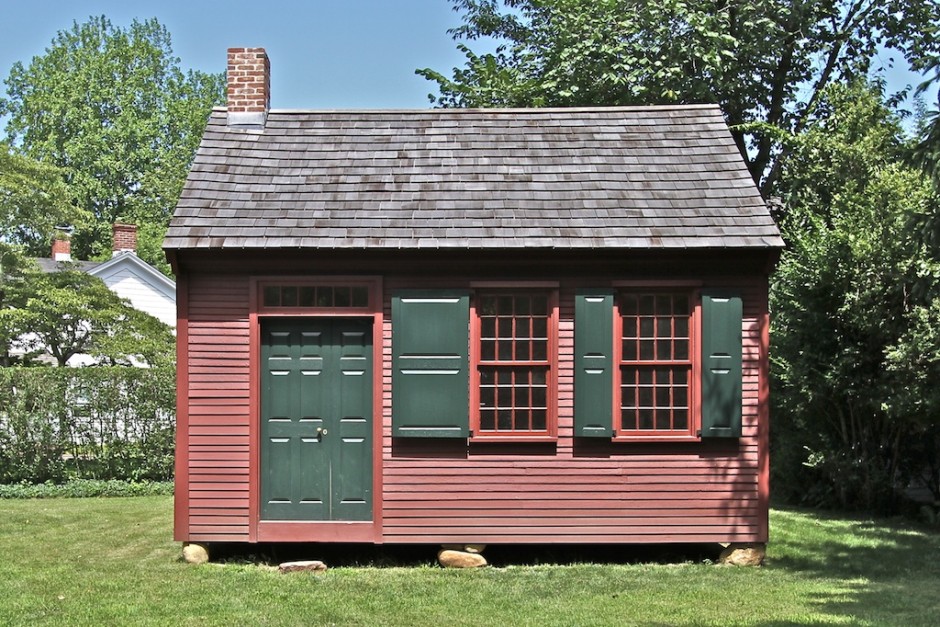
HOOK SCHOOL: Built around 1785, its original use is a mystery. A library or lawyer’s office, we’re not sure. It has been often and is now interpreted as a school. East Hampton Historical Society: www.easthamptonhistory.org
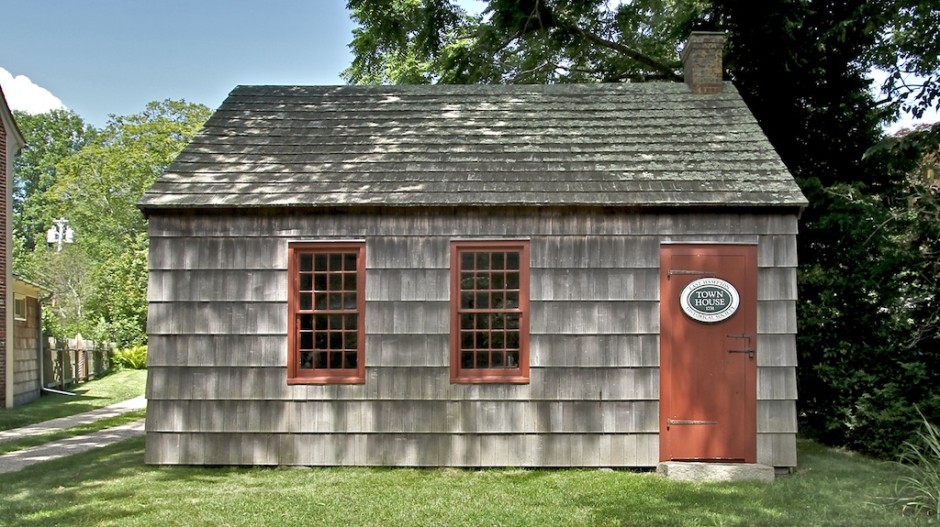
TOWN HOUSE: The first Town House was built in the early 1730s as both a school and town hall. This late 18th century school was moved here in 1958. East Hampton Historical Society: www.easthamptonhistory.org
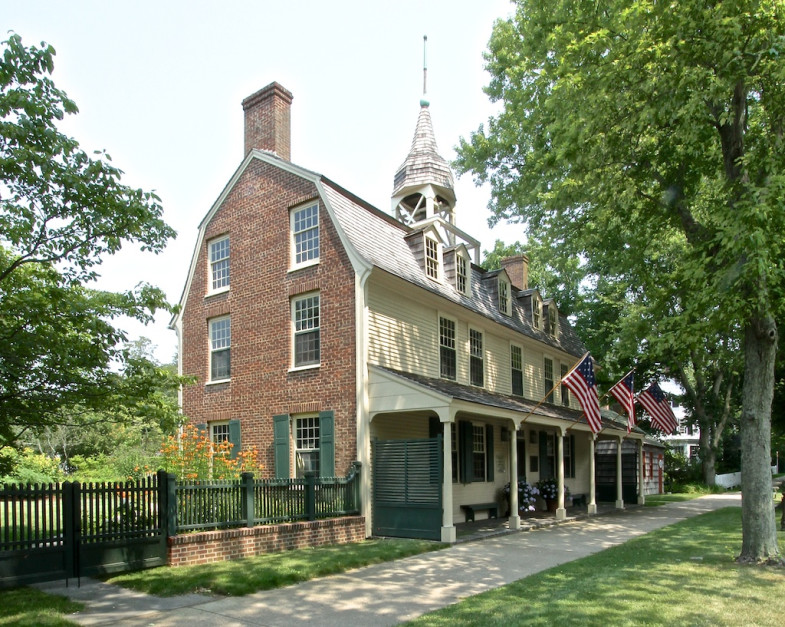
CLINTON ACADEMY
PUBLIC BUILDINGS: Main Street was the site of East Hampton’s public, educational and religious buildings. East Hampton’s Presbyterian minister, Rev. Samuel Buell, was responsible for building Clinton Academy in 1784, one of the first accredited high schools in New York State. The brick end walls, gambrel roof, belfry and front porch made this the most stylish building on Main Street at that time. Buell was influenced in his design by the buildings at his Alma Mater, Yale College. This major project, undertaken just a year following the end of the Revolutionary War, reflects the positive outlook that came with independence and a hope for what educated East Hampton youths could achieve in the new country. East Hampton Historical Society: www.easthamptonhistory.org
————————————————————
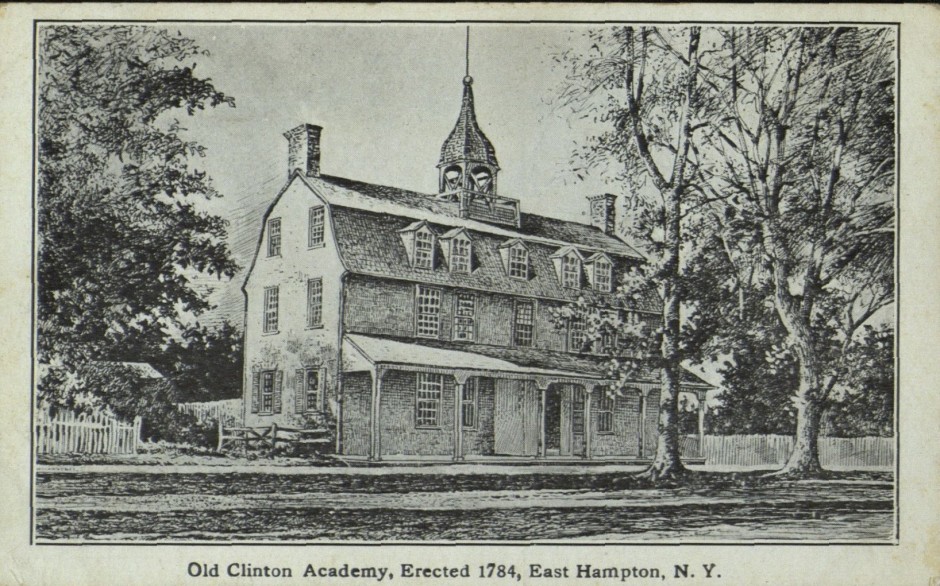
Harvey Ginsberg Postcard Collection. Courtesy of the East Hampton Library’s Long Island Collection.
————————————————————
 The Mimi Meehan Native Plant Garden at Clinton Academy showcases indigenous plants of Long Island. The garden demonstrates low maintenance and conservation practices, as well as the natural beauty of native plantings. It is maintained by Garden Club of East Hampton, established 1914.
The Mimi Meehan Native Plant Garden at Clinton Academy showcases indigenous plants of Long Island. The garden demonstrates low maintenance and conservation practices, as well as the natural beauty of native plantings. It is maintained by Garden Club of East Hampton, established 1914.
Visit: Garden Club of East Hampton
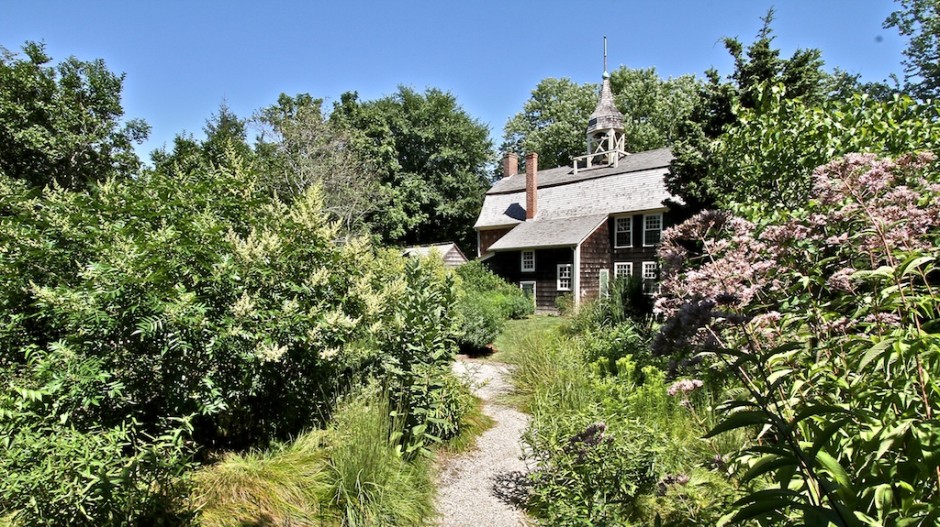
Mimi Meehan Native Plant Garden at Clinton Academy
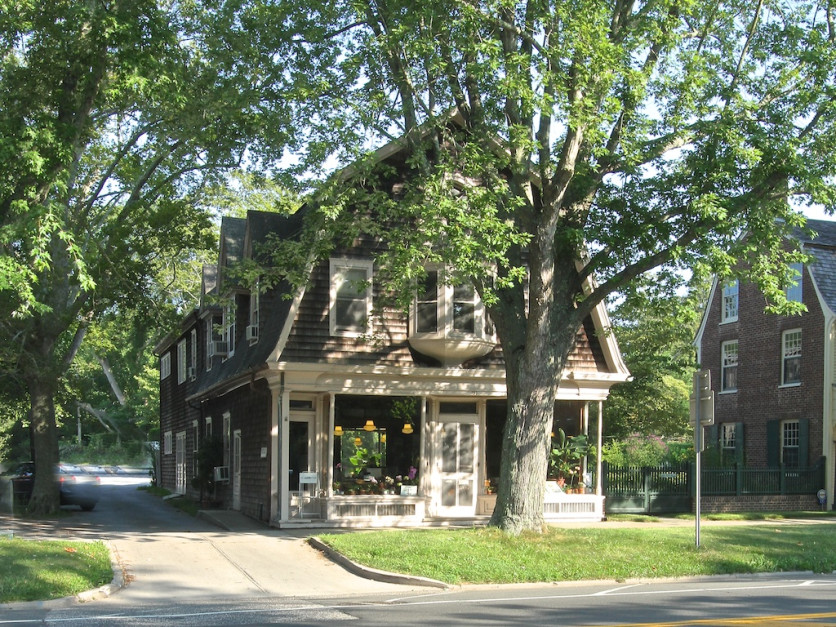
EDWARDS DRUG STORE: With its gambrel roof and central bay window, this 1901 store, now the East Hampton Star office, has style. The interior has a glass paneled ceiling.

EAST HAMPTON LIBRARY: Three plans were submitted by architect Aymar Embury to the library board. It was this rural English Arts & Crafts style that was selected. East Hampton Library.

GEORGE A. OSBORNE HOUSE: This Queen Anne cottage was built in the early 20th century. Complete with a tower and asymmetrical facade, this style typifies our summer architecture. Private residence.
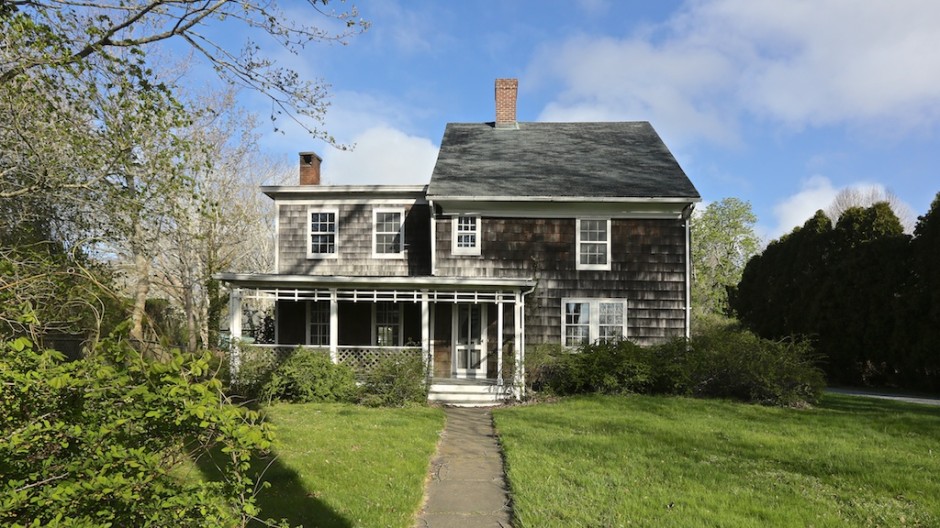
DAVID B. MULFORD HOUSE: This 18th century house, built on the corner of Buell Lane, was moved up the street. Mulford enjoyed talking politics, hence its name, Congress Hall. Private residence.
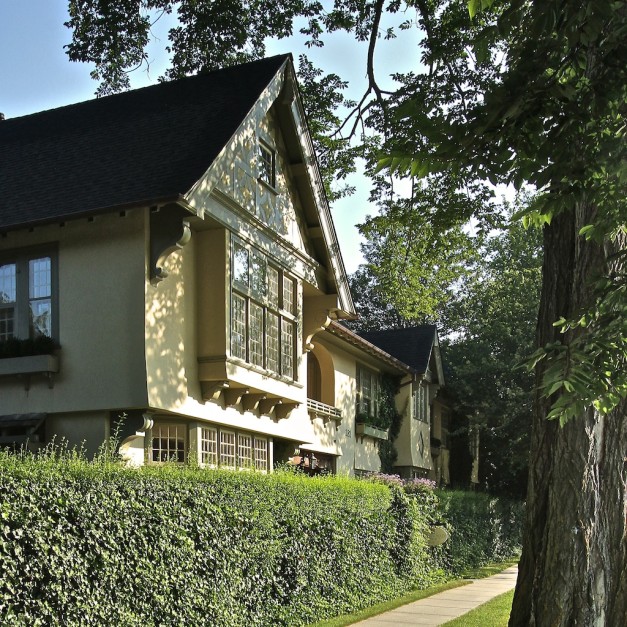
JAMES HARPER POOR HOUSE: While East Hampton’s summer colony developed along Ocean Avenue, some visitors created summer cottages on Main Street. The grandest of these is the J. Harper Poor House, an eighteenth century house remodeled by the architect Joseph Greenleaf Thorp into an Elizabethan cottage with stucco walls, rows of small-paned casement windows, half-tembering and carved wood brackets. Mr. Poor, a New York merchant, and Mr. Thorp were influenced by the Arts and Crafts movement which held a romantic view of medieval English architecture and its hand-crafted quality. The Village Green, with its strong connection to the English villages the settlers had left behind, seemed a perfect setting for this Elizabethan cottage.
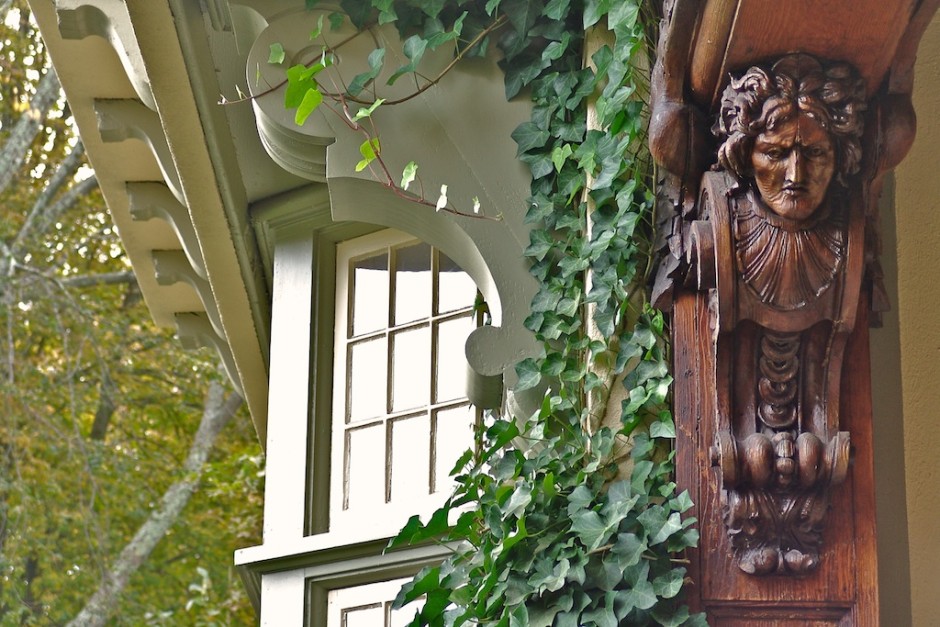
J. HARPER POOR HOUSE: Carved angel bracket supporting the timber lintel at the entrance to the J. Harper Poor House.
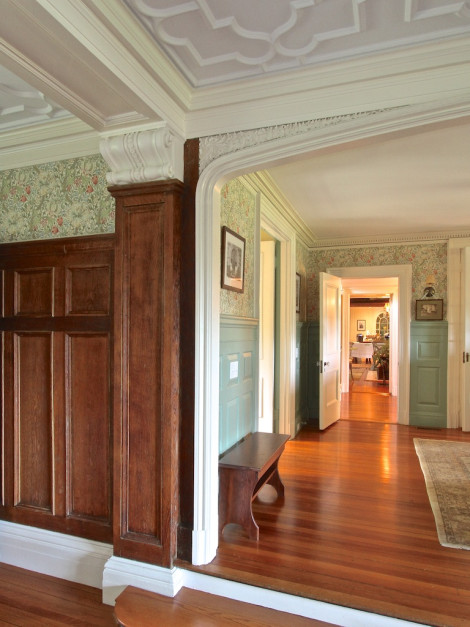
The influence of the Arts & Crafts movement is seen in the carved ornament, tall oak paneling and the plaster relief ceiling in the living room of the J. Harper Poor House.
—————————————————————————————————————————————————————————
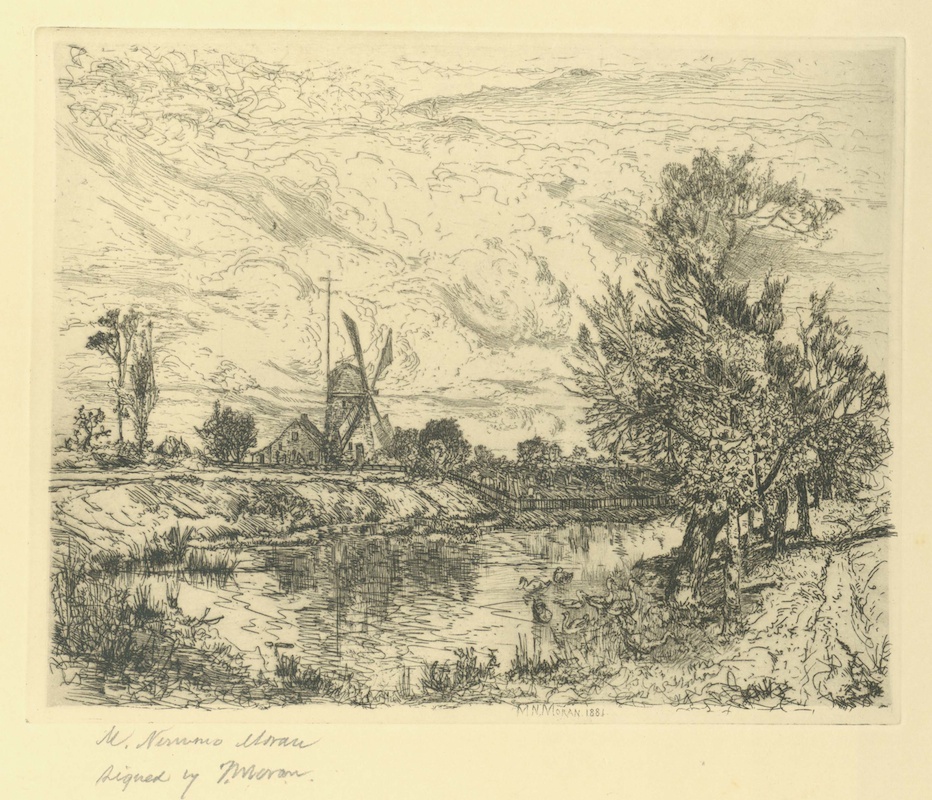
Goose Pond, aka Town Pond, Etching by Mary Nimmo Moran, signed by Thomas Moran. Courtesy of the East Hampton Library’s Long Island Collection.
—————————————————-
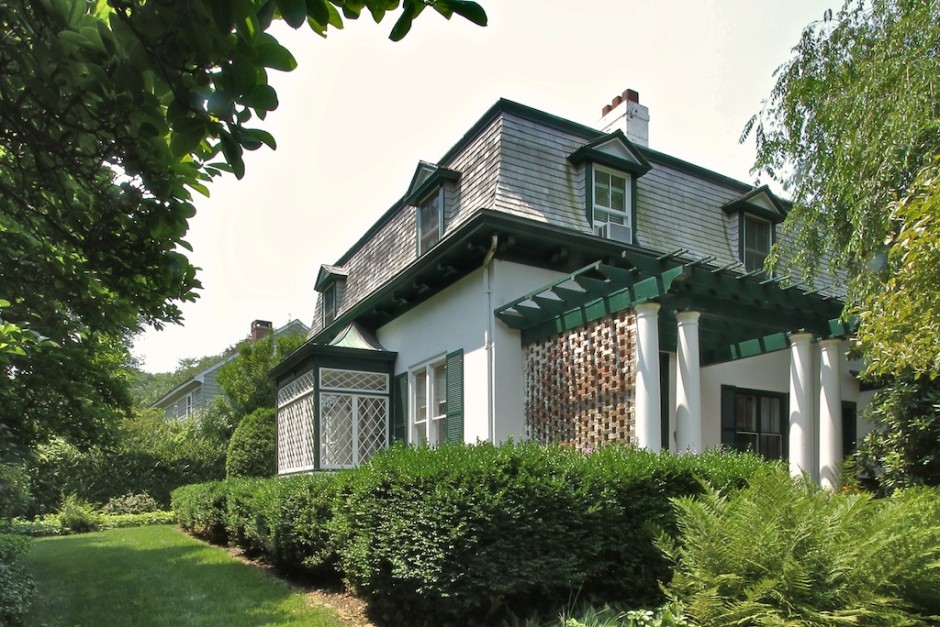
WILLIAM KING HOUSE: This 1872 French Mansard-roofed home, an early summer cottage, brought Victorian taste to Main Street. Private residence.

VILLAGE GREEN: St. Luke’s Episcopal Church, Home Sweet Home, Pantigo Windmill and the Mulford Farm on the right.
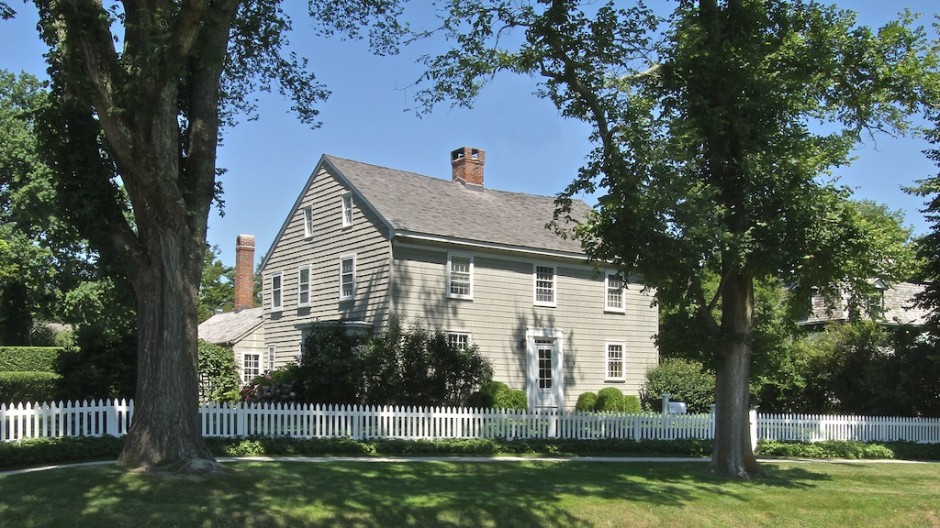
WILLIAM HEDGES HOUSE: This 18th century house was owned by the Hedges family for over 150 years. It is a plain vernacular village farmhouse like so many on the street. Private residence.
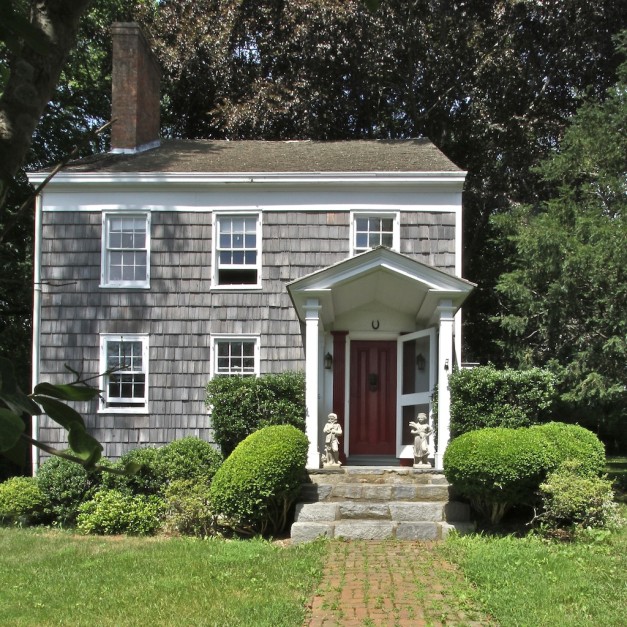
HORACE ISAACS HOUSE: This 1836 house, with original windows and two-panel front door, incorporates the frame of an 18th-century house moved here from across the street. Private residence.
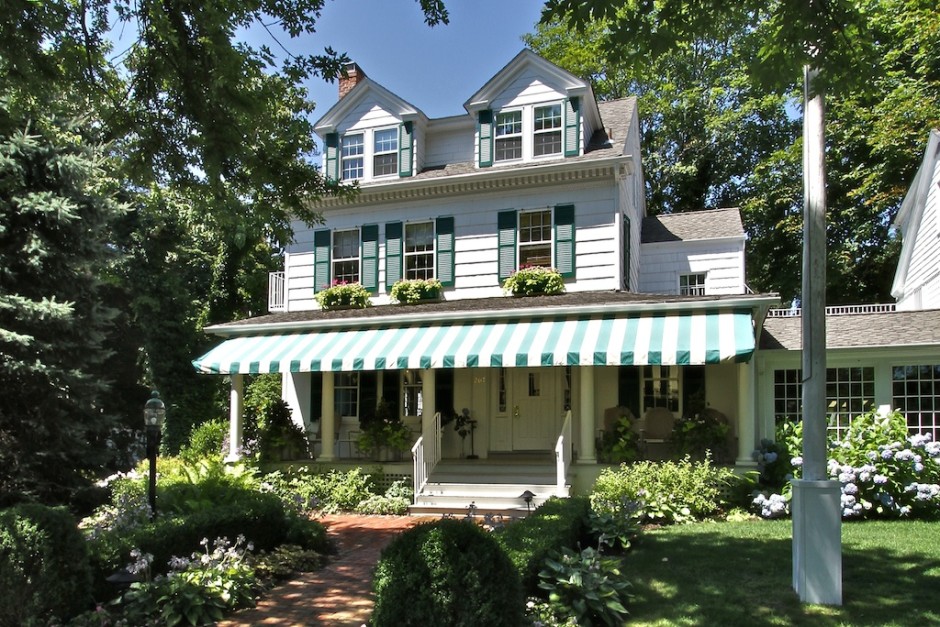
WILLIAM L.H. OSBORN HOUSE: Built in 1840 as an inn, it now welcomes guests c/o The Maidstone. The front doorway is the finest Greek Revival example in the village.
AAQ Resource — The Maidstone | Hotel – Restaurant – Bar – Garden
————————————————
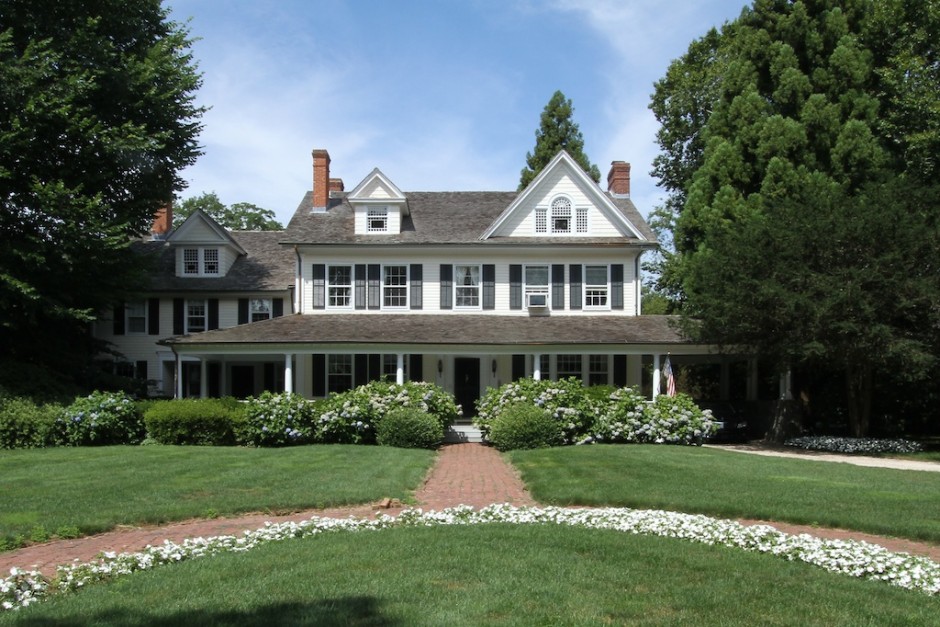
DAVID G. THOMPSON HOUSE: This 1830s house was sold to President John Tyler’s son in 1882. It was enlarged and remodeled in the Colonial Revival style about 1905. Private residence.
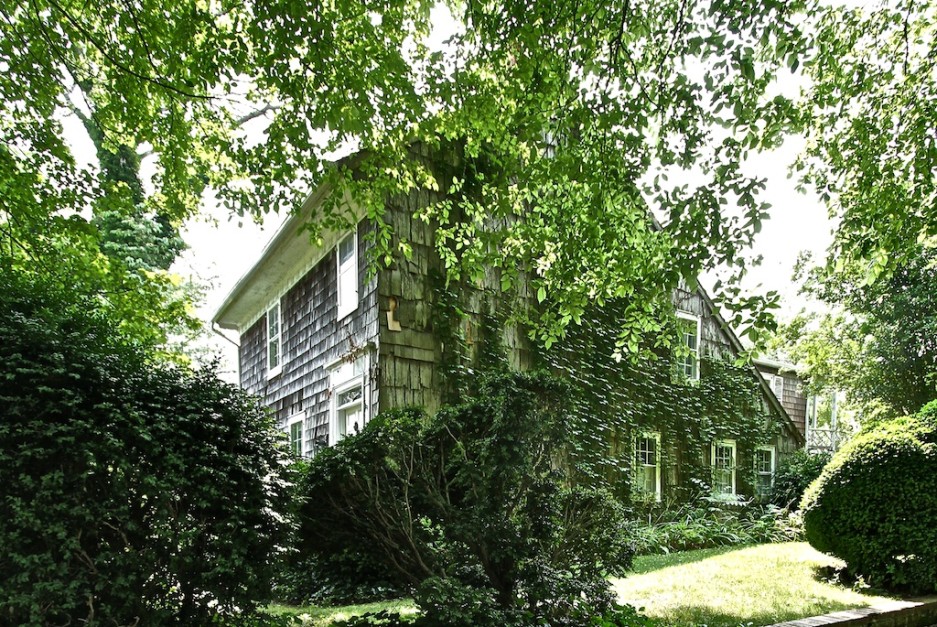
ISAAC W. MILLER HOUSE: In 1929 architect Aymar Embury refurbished this 18th century saltbox house with simple Georgian details, both inside and outside. Private residence.
~~~~~~~~~~~~~~~~~~~~~~~~~~~~~~~~~~~~~~~~~~~

THE STUDIO AND WORKSHOP OF THOMAS AND MARY NIMMO MORAN: The Studio recalls the exciting time when Thomas Moran and his fellow artists discovered East Hampton and were at the center of the early summer colony. Moran built his home overlooking Town Pond in 1884. He designed it with an artistic exterior and an interior devoted to a large art studio that also served as a living room, entertainment hall and dining room. While Moran is famous as the primary artist of the exploration of the American West during this period, his many East Hampton scenes, as well as those of Mary Nimmo Moran, contributed to an appreciation of East Hampton’s pastoral landscape. When the Thomas Moran Trust & East Hampton Historical Society complete restoration of the house and its garden setting, this property will be a highlight of historic Main Street.
East Hampton Historical Society: www.easthamptonhistory.org and the Thomas Moran Trust: www.thomasmorantrust.org. Also, for more on the restoration of the Thomas Moran House see: http://aaqeastend.com/contents/portfolio/issue-1-portfolio/moran-house-restoration-album/
————————–
BREAKING NEWS:
1884 Document Signed by Thomas Moran Found at Site on September 10, 2013
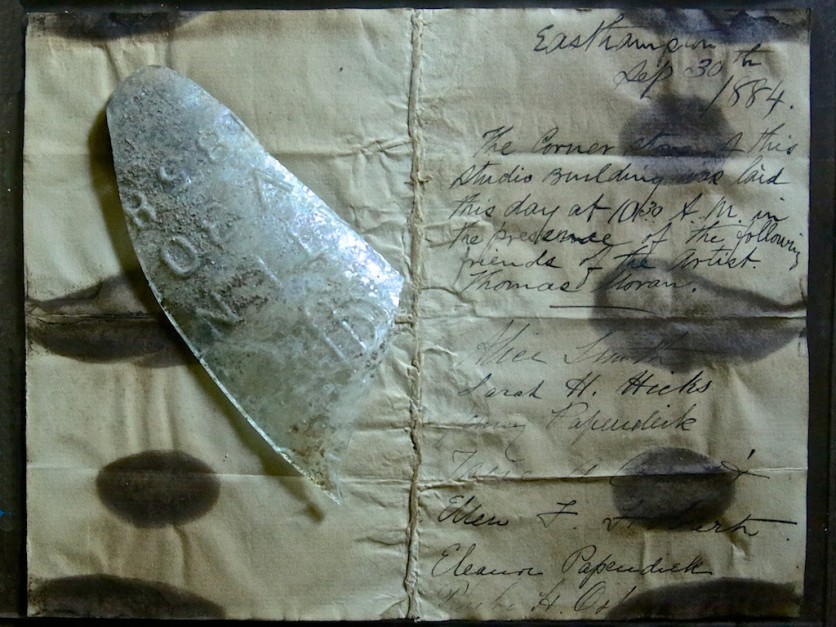
Visit: BREAKING NEWS: 1884 MORAN DOCUMENT FOUND
———————————————————–
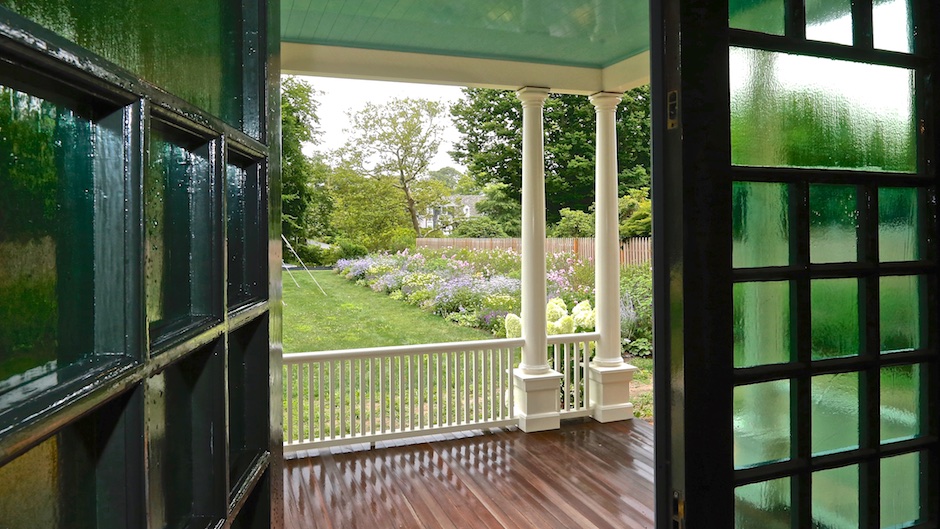
August 4, 2017


August 21, 2018
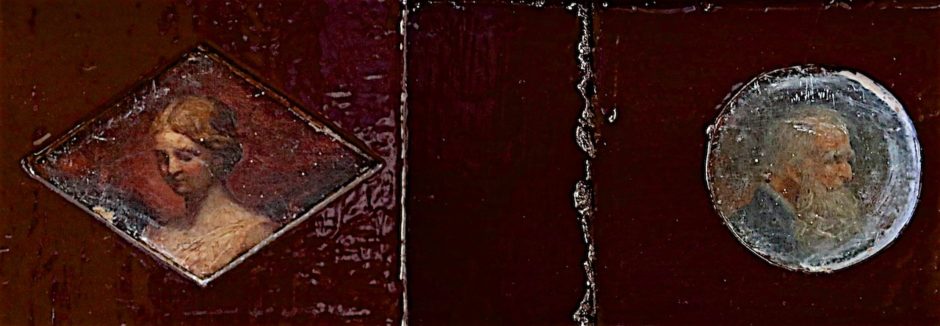
Studio Fireplace Mantel / Detail. November, 2017.
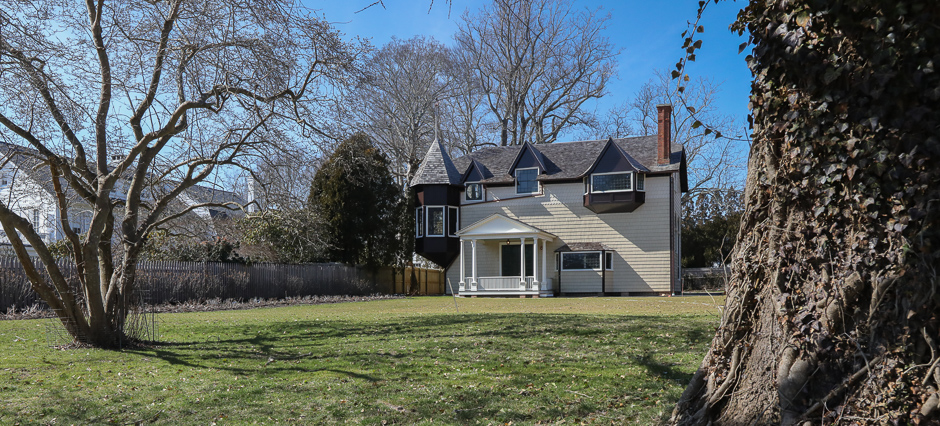

Thomas Moran
Moran Studio. February 16, 2018

February 16, 2018
~~~~~~~~~~~~~~~~~~~~~~~~
Visit: Moran Studio — The Art of Restoration
Visit: Thomas Moran Studio Restoration Select Highlights 2012 / 2017
———————————————————————————————-
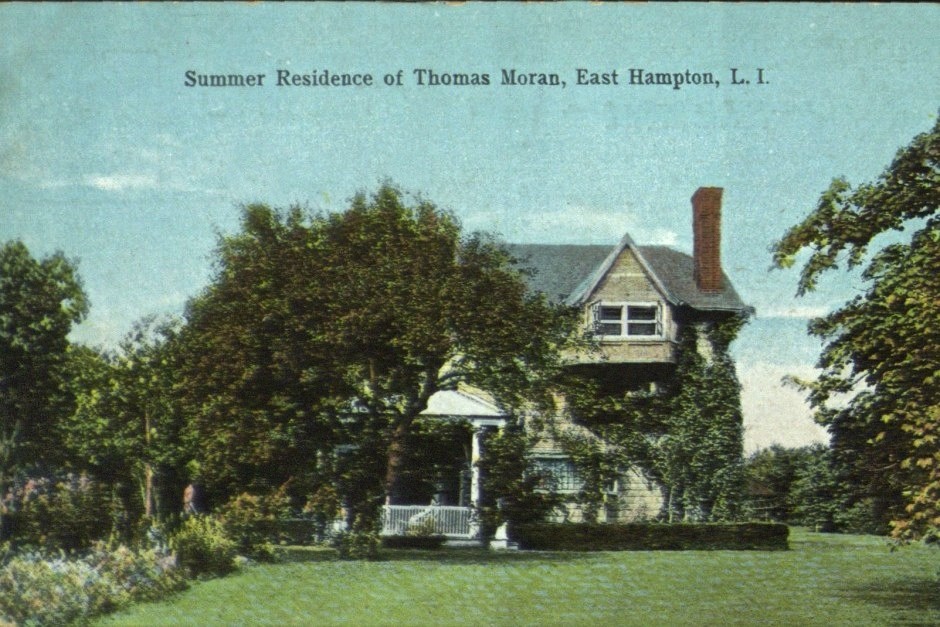
Harvey Ginsberg Postcard Collection. Courtesy of the East Hampton Library’s Long Island Collection.
————————————————————————
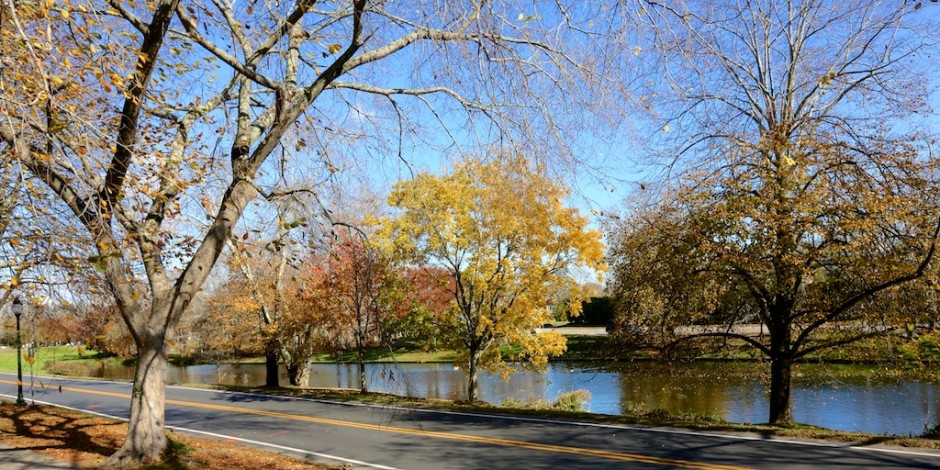
View of Town Pond from Thomas Moran site. November 8, 2013
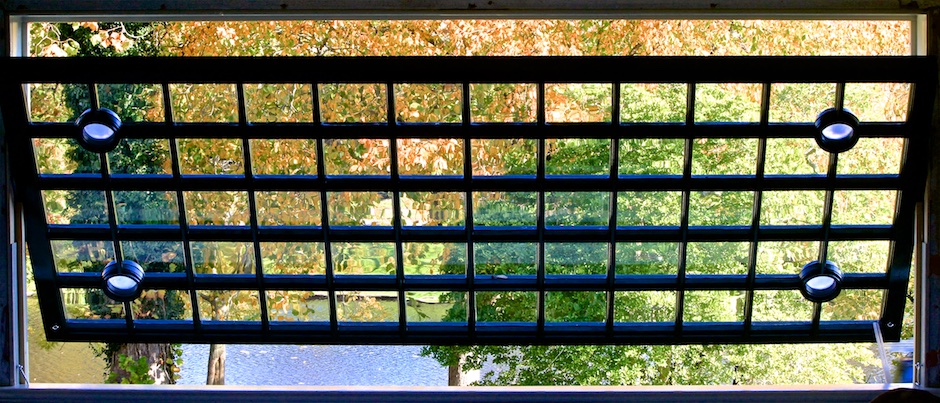
View of Town Pond from Master Bedroom
————————————————–

Goose Pond, aka Town Pond. Sketch by Thomas Moran, 1880. Courtesy of the East Hampton Library’s Long Island Collection.
~~~~~~~~~~~~~~~~~~~~~~~~~~~~~~~~~~~~~~
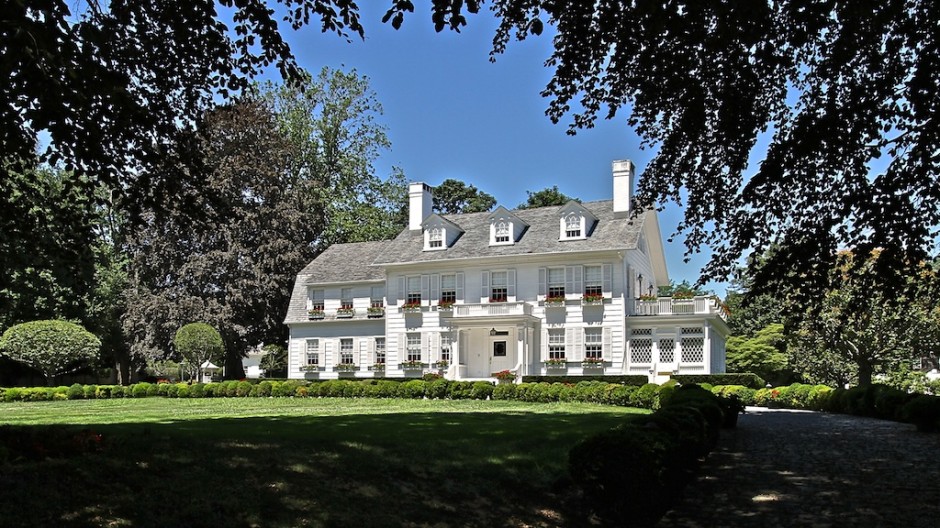
JEREMIAH OSBORN HOUSE: This 18th-century house faced Main Street. In 1906, it was moved back, turned to face Woods Lane and remodeled in the Colonial Revival style. Private residence.
———————————————————
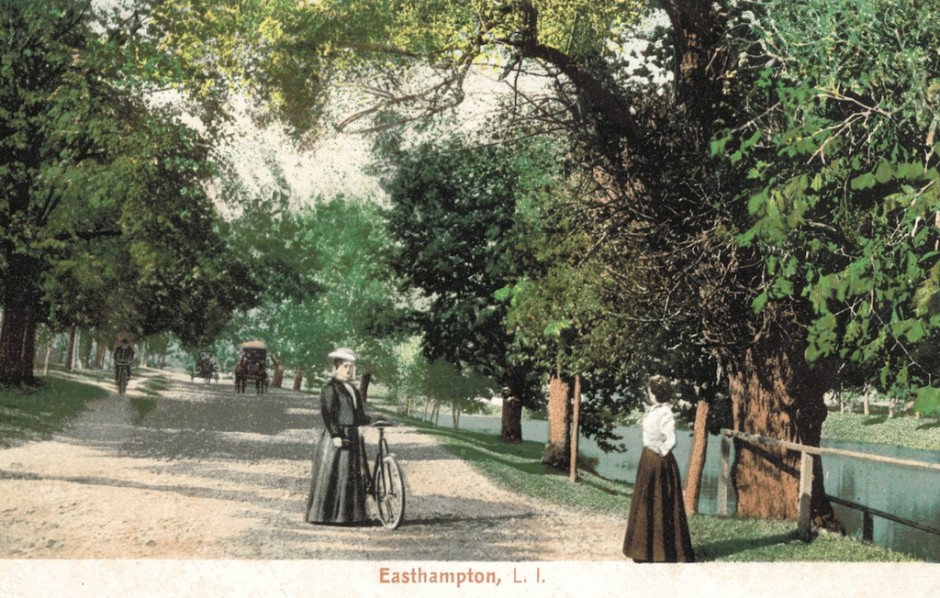
Post Card, ca. 1900, Main Street, south end of Town Pond. Courtesy of the East Hampton Historical Society.
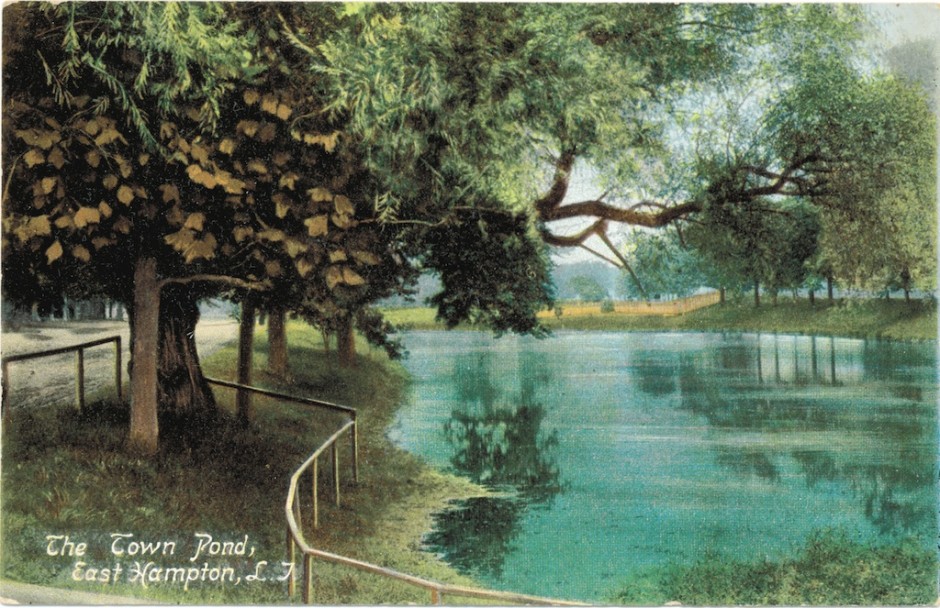
Post Card, Main Street, south end of Town Pond. Courtesy of the East Hampton Historical Society.
——————————————————————–
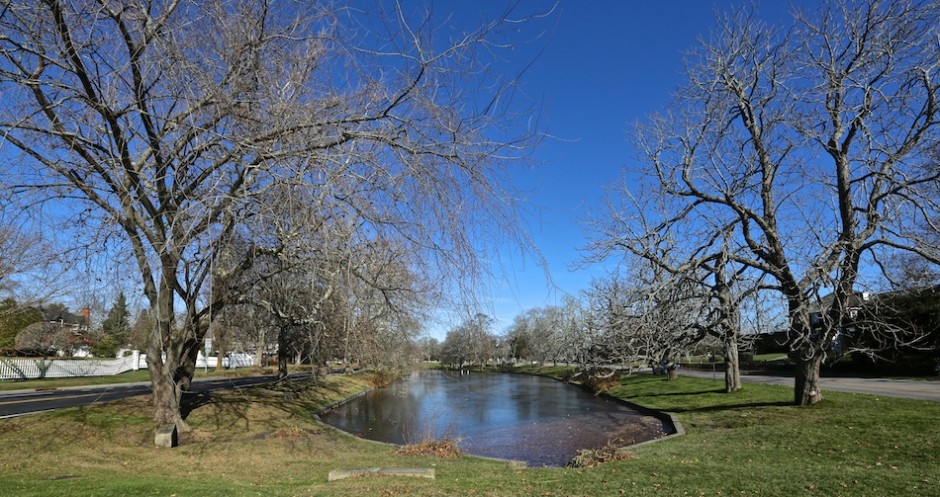
TOWN POND. November 25, 2013.
——————————————————————————-
Visit: East Hampton — Ocean Avenue to Main Beach Tour
Visit: Huntting Lane & Nature Trail, East Hampton
Visit: Ocean Avenue & Main Beach, East Hampton
Visit: Village of East Hampton — Ginsberg Postcard Collection
____________________________________________________________
Except for the post cards and Moran restoration photos, images through 2011, were prepared for the Incorporated Village of East Hampton for a publication to celebrate the 25th anniversary of the Main Street Historic District. Reproduced courtesy of the Village of East Hampton.
Narrative by Robert Hefner, Director of Historic Services, Inc., Village of East Hampton; and Richard Barons, Executive Director, East Hampton Historical Society.
Photos/copyright, except post card views, Jeff Heatley.
____________________________________________________________________________
